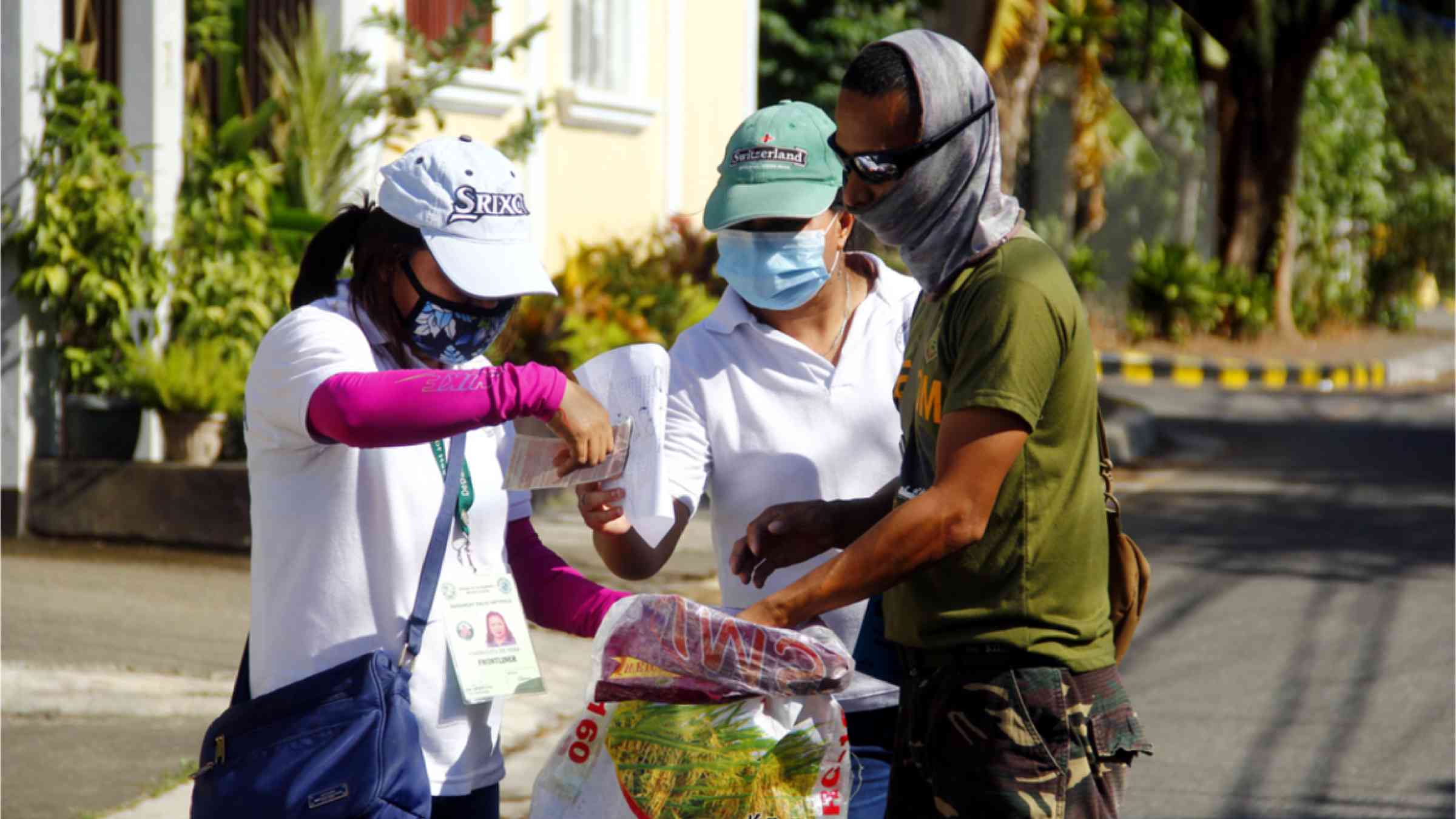Groups provide pre-disaster financial aid to more than 2,600 families in E. Samar before Typhoon Odette hits

Humanitarian groups distributed through digital cash transfer more than Php 4 million to 2,650 families in 40 barangays in Salcedo, Dolores, Lawaan, Quinapondan and Balangiga towns in Eastern Samar to assist households to prioritize their urgent needs three days before the projected impact of Typhoon Odette (International name Rai).
Under the Building Resilient Adaptive and Disaster Ready Communities (B-READY) project, in coordination with Strengthening Harmonized Action for Disaster Risk Reduction, Preparedness and Early Recovery (SHARPER) project, the humanitarian groups utilized an early warning system technology developed by Global Parametrics and provided financial assistance to low-income communities before the typhoon hit.
Both projects involve non-government organizations, private sector groups, government, and science-based agencies, which aim to anticipate typhoons and empower vulnerable groups at risk to prepare for incoming disasters.
Oxfam Pilipinas Country Director Maria Rosario Felizco said that by shifting from giving post-disaster cash aid to providing pre-disaster cash aid, communities can recover from disasters sooner.
“To strengthen Filipinos’ disaster resilience, we need to move from a post-disaster response mechanism, and instead anticipate disasters and support vulnerable groups such as low-income families, elderly people, single women with children, and people with disabilities,” Felizco said.
The initiative also capacitates local leaders to improve disaster preparedness and response.
“With the early disaster warning technology of the BREADY project, local governments can start anticipating and planning for coming disasters that immensely helps communities to cope with disasters better,” Salcedo town Mayor Melchor Mergal said.
“The experience of Salcedo LGU is one of those we are looking at for the scaling up of B-READY. By following the B-READY protocol, an LGU is empowered to decide and make assessments for the need of an activation of the protocol,” Oxfam Financial Inclusion Manager Junver Arcayna said.
The Municipal Disaster Risk Reduction and Management Office (MDRRMO) of Dolores, Eastern Samar also tried B-READY’s anticipatory action for the first time.
“We are glad to be part of the innovative shift to focus on anticipatory action instead of the default post-disaster response. With this project, we are confident that our community is ready to face the coming typhoon,” MDRRMO head Manuel Catuday said.
The B-READY project is an innovation that combines weather forecasting and pre-disaster cash transfer technology that allows communities to protect themselves and minimize damages to livelihoods and infrastructures before a disaster strikes. It is jointly implemented by Oxfam Novib, Oxfam Pilipinas, People’s Disaster Risk Reduction Network, PLAN International, PayMaya, Smart Padala, Global Parametrics, and the Local Government of Salcedo in Eastern Samar, with the donation of Dutch Relief Alliance.
The project is also in partnership with PayMaya and Smart Padala, which help strengthen the cashless ecosystem that allows target groups to access financial aid immediately.
On the other hand, SHARPER project ensures that communities affected by recurrent disasters are capacitated for disaster preparedness, response, and recovery by equipping them to co-lead disaster relief and recovery efforts in collaboration with local authorities.
This initiative is jointly implemented by Oxfam Pilipinas, People’s Disaster Risk Reduction Network (PDRRN); Sentro para sa Ikauunland ng katutubong Agham at Teknolohiya Inc. (SIKAT), and Oxfam America.